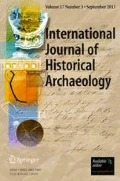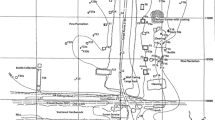Abstract
Traditionally when Americans went to work they expected that they would earn a reasonable wage, work in a safe environment, put in a 40 h week, collect paid vacation days, earn sick leave, have the right to organize and receive health and retirement benefits. Increasingly, however, fewer and fewer workers receive these rights and today only a minority of people in the United States work under these conditions. The decline in real wages, benefits, rights and safety experienced by twenty-first century American workers has correlated with a decline in organized labor. Corporations and the right have assailed unions to erode worker’s rights and “increase competitiveness” in a globalized, neo-liberal, capitalist, world. The attacks on unions spring from a monstrous lie, that politicians and corporations gave labor these benefits and thus workers no longer need unions. On the battlefield of public policy, these assaults on organized labor work in a fundamentally ideological way that calls the continued existence of unions into question. In this paper, I will discuss how archaeological studies of labor’s struggle can reveal that contrary to the monstrous lie, workers and their families won worker’s rights with blood and that solidarity and organization remain essential to maintain these rights. The paper begins with the present state of labor’s struggle and looks to the past to consider its preconditions. Archaeologists have studied strikes, the lived experience of working class life and class war to study history backwards and these studies contribute to the labor’s struggle for the future.







Similar content being viewed by others
References
Agger, B. (2004). Speeding Up Fast Capitalism: Cultures, Jobs, Families, Schools, Bodies, Paradigm, Boulder.
Barile, K., and Brandon, J. C. (eds.) (2004). Household Chores and Household Choices: Theorizing the Domestic Sphere in Historical Archaeology, University of Alabama Press, Tuscaloosa.
Bassett, E. (1994). “We took care of each other like families were meant to”: gender, social organization, and wage labor among the Apache at Roosevelt. In Scott, E. M. (ed.), Those of Little Note: Gender, Race, and Class in Historical Archaeology, University of Arizona Press, Tucson, pp. 55–79.
Beaudry, M. (ed.) (1988). Documentary Archaeology in the New World, Cambridge University Press, Cambridge.
Beaudry, M. (2007). Findings: The Material Culture of Needlework and Sewing, Yale University Press, New Haven.
Beaudry, M., and Mrozowski, S. (1988). The archaeology of work and home life in Lowell, Massachusetts: an interdisciplinary study of the Boott Cotton Mills Corporation. Industrial Archaeology 19: 1–22.
De Cunzo, L. A., and Herman, B. L. (eds.) (1996). Historical Archaeology and the Study of American Culture, Henry Francis du Pont Winterthur Museum, Winterthur.
Delle, J. A., Mrozowski, S. A., and Paynter, R. (eds.) (2000). Lines That Divide: Historical Archaeologies of Race, Class, and Gender, University of Tennessee Press, Knoxville.
Durrenberger, E. P. (2007). The anthropology of organized labor in the United States. Annual Review of Anthropology 36: 73–88.
Fleck, S., Glaser, J., and Sprague, S. (2011). The compensation-productivity gap: a visual essay. Monthly Labor Review. January: 57–79.
Hale, C. (2006). Activist research v. cultural critique: indigenous land rights and the contradictions of politically engaged anthropology. Cultural Anthropology 21: 96–120.
Hill, J. (1923). Workers of the world awaken. I.W.W. Songs to Fan the Flames of Discontent. 19th ed. Industrial Workers of the World, Chicago.
Holmes, D. (2000). Integral Europe: Fast-Capitalism, Multiculturalism, and Neofacism, Princeton University Press, Princeton.
Larkin, K., and McGuire, R. H. (eds.) (2009). The Archaeology of Class War: The Colorado Coalfield Strike of 1913–1914, University of Colorado Press, Boulder.
Leone, M. (1995). A historical archaeology of capitalism. American Anthropologist 97: 251–268.
Leone, M. P., and Potter Jr., P. B. (1988). Introduction: issues in historical archaeology. In Leone, M. P., and Potter Jr., P. B. (eds.), The Recovery of Meaning: Historical Archaeology in the Eastern United States, Smithsonian Institution Press, Washington, DC, pp. 1–26.
Leone, M. P., and Potter Jr., P. B. (eds.) (1999). Historical Archaeologies of Capitalism, Kluwer, New York.
Little, B. (ed.) (1992). Text-Aided Archaeology, CRC Press, Boca Raton.
Little, B. (2011). Epilogue: changing the world with archaeology. In Stottman, M. J. (ed.), Archaeologists as Activists: Can Archaeology Change the World? University of Alabama Press, Tuscaloosa, pp. 154–158.
McGuire, R. H. (2004). Colorado coalfield massacre. Archaeology Magazine 57(6): 62–70.
Nassaney, M., and Abel, M. (1993). The political and social contexts of cutlery production in the Connecticut Valley. Dialectical Anthropology 18: 247–289.
Nida, B. and Adkins, M. J. (2010). The social and environmental upheaval of BlairMountain: a working class struggle for unionization and historic preservation. Paper presented at the annual meeting of the Society for American Archaeology, Saint Louis. MO.
Nyden, P. J. (2012). Federal Judge Upholds Blair Mountain Battlefield removal, The Charleston Gazette, Charleston.
Patel, S. S. (2012). Mountain top rescue. Archaeology Magazine 65(1): 122–128.
Saitta, D. (2004). Desecration at Ludlow. New Labor Forum 13: 84–87.
Saitta, D. (2007). The Archaeology of Collective Action, University of Florida Press, Gainesville.
Shackel, P. A. (2000). Craft to wage labor: agency and resistance in American historical archaeology. In Robb, J., and Dobres, M. (eds.), Agency Theory in Archaeology, Routledge, London, pp. 232–246.
Shackel, P. A. (2009). The Archaeology of American Labor and Working-Class Life, University of Florida Press, Gainesville.
Shackel, P. A., and Roller, M. (2012). The Gilded Age wasn’t so gilded in the anthracite region of Pennsylvania. International Journal of Historical Archaeology 16: 761–775.
Wallerstein, I. M. (2000). The Essential Wallerstein, New Press, New York.
Wood, M. (2009). Building the corporate family: constructing homes, families, and the Nation. In Larkin, K., and McGuire, R. H. (eds.), The Archaeology of Class War: The Colorado Coalfield Strike of 1913–1914, University of Colorado Press, Boulder, pp. 123–160.
Author information
Authors and Affiliations
Corresponding author
Rights and permissions
About this article
Cite this article
McGuire, R.H. Won with Blood: Archaeology and Labor’s Struggle. Int J Histor Archaeol 18, 259–271 (2014). https://doi.org/10.1007/s10761-014-0256-3
Published:
Issue Date:
DOI: https://doi.org/10.1007/s10761-014-0256-3




